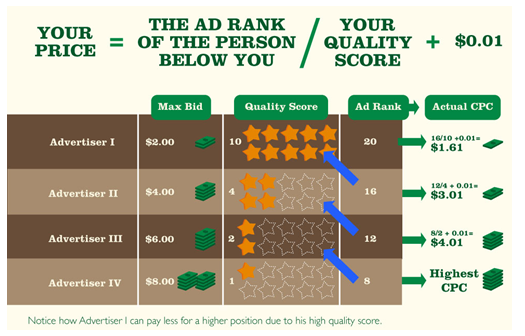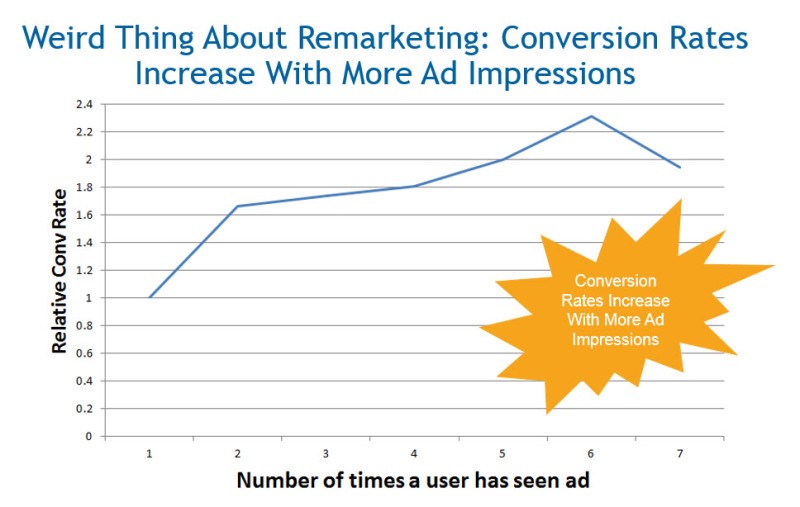
In a way, AdWords is a lot like college.
You show up on day one doe-eyed, forced to decide whether you’d rather dominate the books or the beer pong table. (If you’re a savant, perhaps you’re capable of doing both simultaneously.) If you study and learn and adapt and grow, you come out the other end successful – in college, this means a degree; in AdWords, it means obliterating your KPIs and your business goals.
Unfortunately, there’s another path, too. A dark, treacherous, expensive path, littered with bong rips and Nintendo cartridges: the one where you fail to plan and grow sufficiently. In scenarios such as these, both AdWords and higher education have the capacity to turn your bank account into an unmanned fire hose.
And nobody wants to see that happen. I don’t want to see that happen. In fact, I want the exact opposite. I want to be the parent beaming in a sea of other, less stoked parents, as you receive your diploma, not the one moving your Nerf hoop and flat screen TV back into the childhood bedroom where you’ll drift through your twenties in a balding malaise.
To improve your chances of AdWords dominance (and avoid becoming a dropout), we’ve put together this infographic detailing every step between you and PPC success, from goal creation and keyword research to counting bread on the deck of your mega-yacht.

How to Use Google AdWords, Step #1: Establish Account Goals
What are you using AdWords for? Lead generation? E-commerce? Brand building? How you structure your account and the features you take advantage of will hinge on your response.
To learn more about establishing realistic goals for your AdWords account, check out these resources:
- How to Develop a PPC Plan that Aligns with Your Goals
- 5 Questions AdWords Advertisers Should Ask Themselves Every Quarter
- 3 Ways a Small Business Can Compete with the Big Guys in PPC
How to Use Google AdWords, Step #2: Determine Audience
Developing personas is essential. What do your ideal customers do? Where do they do it? When are they actively searching? On what device?
To learn more about developing customer personas and defining your audience, check out these resources:
- How to Create Buyer Personas That Are Scary Accurate
- 3 Free Tools to Help You Understand Your Online Audience
- 4 International PPC Tips for Non-US English-Speaking Countries
How to Use Google AdWords, Step #3: Conduct Keyword Research
By bidding on keywords relevant to your business, you can place your ads in the search results when people are searching for what you offer. Keyword tools can help you discover cost, competition, and volume for search terms at every stage of your sales funnel.
To learn more about conducting keyword research, check out these resources:
- WordStream’s Free Keyword Tool & Free Negative Keyword Tool
- 5 Keyword Search Tools Everyone Should Be Using
- 5 Brilliant Competitive Advertising Strategies to Outsmart Your Competition
- Commercial Intent: How to Find Your Most Valuable Keywords
How to Use Google AdWords, Step #4: Set Budget & Bids
You’ve determined which keywords to bid on: time for some math! If the average CPC looks too high, get granular: volume will decrease, but so will cost!Make sure to spend most of your AdWords budget on keywords that convert at a high rate! But make room for testing and brand-building, too.

To learn more about setting AdWords budgets and bids, check out these resources:
- The Complete, Digestible Guide to AdWords Budgets
- Easy AdWords Bidding Strategies for Newbies and Math Haters
- 5 Reasons to NEVER Use AdWords Automatic Bidding
How to Use Google AdWords, Step #5: Structure Account
The name of the game is relevance, folks! Your account is made up of campaigns, each with distinct goals. Within each campaign, you need tightly knit ad groups, each featuring just a handful of keywords and hyper-relevant ads.
To learn more about structuring your AdWords account, check out these resources:
- 6 Steps to Building a Brilliant Paid Search Account Structure
- 5 Tips to Align Your AdWords Account with Your Sales Funnel Stages
- 3 Reasons to Ditch Your Messy AdWords Account and Start Over
Step #5.5: Quality Score is King
Quality Score is Google’s way of grading your keywords and ads in terms of how relevant they are to users. Small ad groups and highly clickable ads raise your Quality Score, which lowers how much you pay per click while raising your ad rank!

To learn more about Quality Score, check out:
- Hacking AdWords: Winning at AdWords the Weird Way
- The Ultimate Guide to Quality Score: 15 PPC Experts Discuss Google AdWords Quality Score
How to Use Google AdWords, Step #6: Write Killer Ads
Maximize CTR by ensuring every text ad has a pair of compelling headlines, a call to action, and includes the keyword you’re bidding on. Extensions make your ad bigger and more informative. And remember: Emotional ads get more clicks.
To write Expanded Text Ads that actually convert, check out these resources:
- 7 Best Practices of Expanded Text Ads
- The 7 Deadly Sins of Expanded Text Ads (And What to Do Instead)
- The 4 Emotions that Make the Best Emotional Ads
- Our 8 Best Ad Copywriting Tips EVER
How to Use Google AdWords, Step #7: Design Great Landing Pages
This is where people who have clicked your ads either convert or they don’t! Follow these guidelines for high-performing landing pages:
- Minimize form fields
- Focus on benefits, not just features
- Use multiple, high-quality product images
- Make your call-to-action clear as day
- Make sure your landing pages work on mobile! (Or let users skip the landing page completely and just call you)
To learn more about designing great landing pages, check out these resources:
- 7 Strategies for High-Converting Landing Pages
- 16 Ways to Optimize Your Product Landing Pages
- 3 Woefully Underused, Crazy-Effective PPC Landing Page Tips
- Our 10 Best Landing Page Tips & Tricks Ever
How to Use Google AdWords, Step #8: Implement Conversion Tracking
Place the requisite code on your website and then use either AdWords or Google Analytics to create conversion goals
To learn more about conversion tracking, check out these resources:
- Google Conversion Tracking: Complete Guide to Conversion Tracking in AdWords
- What Is Call Tracking and Why Does It Matter?
How to Use Google AdWords, Step #9: Grow Remarketing Lists
Build your remarketing lists as early as possible. This will allow you to keep your product or service in front of prospects even if they don’t convert on their first site visit.

To learn more about growing your remarketing lists, check out these resources:
- 10 Remarketing Facts to Make You Rethink Your Entire PPC Strategy
- All the Remarketing Audiences You Should Be Targeting in PPC
- RLSA for Competitive Markets: A Ridiculously Awesome Way Forward in PPC
How to Use Google AdWords, Step #10: Routine optimisation
Test everything! A/B test your ad copy and landing pages. Adjust bids based on keyword performance. Add negative keywords to eliminate unqualified search queries.
To learn more about account optimisation, check out these resources:
- AdWords Metrics: How to Make Sense of Your PPC Data
- Going from Good to Great: 5 Ways to Optimise Your PPC Performance
- Everything You Know About Conversion Rate Optimization is Wrong
- 3 Underused AdWords Features That’ll Blow Your Mind and Boost Your Bottom Line
How to Use Google AdWords, Step #11: Profit!!!
You did it! Between mimosas on your yacht, keep your PPC strategy on the cutting edge by reading industry blogs (like ours!).
Source: WordStream
If you need help on Google Adwords for your next Inbound Marketing Campaign, consider working with the top digital marketing agencies to help you grow your business online. Also, you can join Top4, the latest social media business marketing platform, to boost your online presence.




